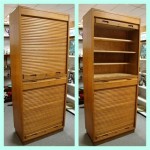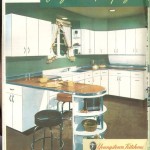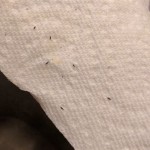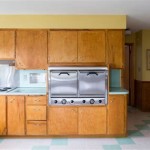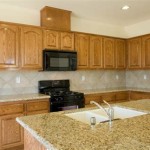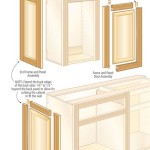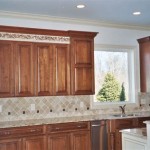What Is The Best Primer For Kitchen Cupboards?
Refinishing kitchen cupboards represents a cost-effective alternative to complete kitchen renovation. Achieving a professional and durable finish hinges significantly on selecting and applying the appropriate primer. Primer serves as a crucial intermediary layer between the existing cupboard surface and the new paint, promoting adhesion, blocking stains, and creating a uniform foundation for the topcoat. Determining the "best" primer requires careful consideration of the cupboard material, existing finish, desired final appearance, and the type of paint intended for use.
The primary function of primer extends beyond mere paint adhesion. It acts as a sealant, preventing the underlying material from absorbing the topcoat unevenly, which can result in inconsistent color and sheen. For cupboards constructed from porous materials like wood, primer is especially vital. It fills the pores, creating a smooth surface that minimizes the amount of paint required for full coverage. Furthermore, primer plays a significant role in stain blocking. Kitchen cupboards are often exposed to spills, grease, and other substances that can leach through the topcoat and compromise the finish. A quality primer formulated for stain blocking creates a barrier, preventing these blemishes from appearing.
Several primer types are available, each possessing distinct characteristics that make them suitable for specific applications. Oil-based primers have traditionally been favored for their excellent adhesion, stain blocking capabilities, and ability to level imperfections. However, they are known for their strong odor, longer drying times, and the requirement for mineral spirits or paint thinner for cleanup. Latex primers, on the other hand, are water-based, offering low odor, quick drying times, and easy cleanup with soap and water. While latex primers have improved significantly in recent years, they may not offer the same level of stain blocking or adhesion as oil-based options on certain surfaces. Shellac-based primers are another alternative, prized for their exceptional stain blocking properties, fast drying times, and compatibility with nearly all topcoat paints. However, shellac primers can be brittle and prone to cracking, making them less suitable for high-impact areas or surfaces that experience significant expansion and contraction due to temperature or humidity fluctuations.
Understanding Cupboard Material and Existing Finish
The composition of the kitchen cupboards significantly influences the selection of the appropriate primer. Solid wood cupboards generally benefit from oil-based or high-quality latex primers. Oil-based primers penetrate the wood grain effectively, providing a strong bond and preventing tannin bleed-through, a common issue with certain wood species like oak or cherry. High-quality latex primers formulated for wood can also perform well, particularly when multiple coats are applied or when a less porous wood species is involved. For cupboards constructed from MDF (Medium-Density Fiberboard) or particleboard, a primer specifically designed for these materials is recommended. MDF and particleboard are highly absorbent, requiring a primer that can effectively seal the surface and prevent excessive moisture absorption. Look for primers labeled as "MDF primer" or "multi-purpose primer" that are suitable for use on porous surfaces.
The existing finish on the cupboards also plays a crucial role in primer selection. If the cupboards are currently painted with an oil-based paint, it is generally recommended to use an oil-based primer to ensure compatibility and proper adhesion. Similarly, if the existing finish is latex-based, a latex primer is typically the best choice. When switching from an oil-based finish to a latex paint, thorough preparation is essential. This includes sanding the surface to create a mechanical bond, cleaning to remove any contaminants, and applying a bonding primer specifically designed to adhere to glossy or smooth surfaces. Bonding primers create a strong connection between the old oil-based finish and the new latex paint layer. For cupboards with a clear coat or varnish finish, sanding is crucial to remove the sheen and create a surface that the primer can grip effectively. A bonding primer may also be necessary in this scenario, especially if the varnish is particularly glossy or durable.
In scenarios where the existing finish is damaged, peeling, or flaking, it is imperative to remove all loose paint before applying primer. Scraping, sanding, and potentially chemical stripping may be necessary to create a sound surface. After removing the damaged finish, the surface should be thoroughly cleaned to remove any dust, debris, or residue. Priming over a damaged or improperly prepared surface will only perpetuate the problem, leading to premature paint failure and an unsatisfactory finished product.
Primer Types and Their Applications
Choosing the right primer type requires a comprehensive understanding of its properties and limitations. Oil-based primers, as previously mentioned, offer excellent adhesion and stain blocking. They are generally considered the best choice for raw wood, cabinets with existing oil-based finishes, and surfaces prone to staining. However, their high VOC (Volatile Organic Compound) content, strong odor, and extended drying times are drawbacks. Latex primers are water-based, low-odor, and easy to clean up. Their performance has improved significantly in recent years, and high-quality latex primers can provide excellent adhesion and coverage on properly prepared surfaces. They are a good option for cabinets with existing latex finishes, MDF, and particleboard, especially when multiple coats are applied. Shellac primers are renowned for their exceptional stain blocking capabilities and fast drying times. They are effective at sealing knots in wood, preventing tannin bleed-through, and blocking odors. However, shellac primers can be brittle and prone to cracking, making them less suitable for high-impact areas or surfaces subject to significant movement.
Bonding primers, also known as adhesion primers, are formulated to adhere to difficult surfaces such as glossy laminates, ceramic tiles, and previously painted surfaces with a high sheen. These primers contain special additives that create a strong mechanical bond, ensuring that the paint adheres properly. Epoxy primers are two-part systems that offer exceptional durability, chemical resistance, and adhesion. They are often used in industrial settings but can also be a good choice for kitchen cabinets that are exposed to harsh chemicals or frequent cleaning. However, epoxy primers require careful mixing and application, and they can be more expensive than other types of primer.
Tinted primers can be beneficial when painting cabinets with a dark or vibrant color. Tinting the primer to a similar shade as the topcoat can reduce the number of coats of paint required for full coverage, saving time and materials. Self-etching primers contain acidic etchers that bite into metal surfaces, creating a strong bond. They are commonly used on metal cabinets or hardware that needs to be painted.
Preparation and Application Techniques for Optimal Results
Proper preparation is paramount to achieving a professional and durable finish on kitchen cupboards. Before applying primer, thoroughly clean the cabinets with a degreasing cleaner to remove any grease, dirt, or grime. Rinse the cabinets with clean water and allow them to dry completely. Sand the cabinets to create a slightly rough surface that the primer can grip effectively. Use a fine-grit sandpaper (180-220 grit) for this purpose. Remove any dust created by sanding with a tack cloth or damp rag. Repair any imperfections in the surface with wood filler or spackle. Allow the filler to dry completely and sand it smooth before priming.
When applying primer, use a high-quality brush, roller, or spray gun. A brush is ideal for detail work and cutting in around edges, while a roller is best for covering large, flat surfaces. A spray gun provides the smoothest and most even finish, but it requires more skill and equipment. Apply the primer in thin, even coats, following the manufacturer's instructions. Avoid applying too much primer at once, as this can lead to runs, drips, and uneven coverage. Allow the primer to dry completely before applying the topcoat. The drying time will vary depending on the type of primer, temperature, and humidity. Lightly sand the primed surface with fine-grit sandpaper (320-400 grit) to remove any imperfections and create a smooth surface for the topcoat. Remove any dust created by sanding before applying the paint.
Multiple coats of primer may be necessary to achieve optimal results, especially when dealing with porous surfaces or stubborn stains. Apply a second coat of primer after the first coat has dried completely. If using a tinted primer, ensure that the primer is thoroughly mixed before application to ensure consistent color. When using a spray gun, practice on a piece of cardboard or scrap wood to get a feel for the equipment and technique. Maintain a consistent distance and speed when spraying to avoid runs and uneven coverage. Wear appropriate safety gear, including a respirator, gloves, and eye protection, when working with primers, especially oil-based or shellac-based options. Ensure adequate ventilation in the work area to minimize exposure to harmful fumes.
Best Primers Paints For Cabinets Furniture Fireplaces The Striped House
What Is The Best Primer To Use When Painting Kitchen Cabinets Quora

Top Primers For Kitchen Projects The Perfect Finish Blog By Kilz

What Is The Best Primer For Kitchen Cabinets Jim Handyman

Refinish Kitchen Cabinets With Kilz Restoration Primer

Best Primers For Cabinets Mistakes To Avoid While Painting

The Best Primer For Oak Cabinets Why You Need To Prime Don T Skip This Painted By Kayla Payne

How To Paint Oak Cabinets And Hide The Grain Tutorial

How To Paint Kitchen Cabinets A Step By Guide Confessions Of Serial Do It Yourselfer

The Best Kitchen Cabinet Paint Brand Honest Review
Related Posts

